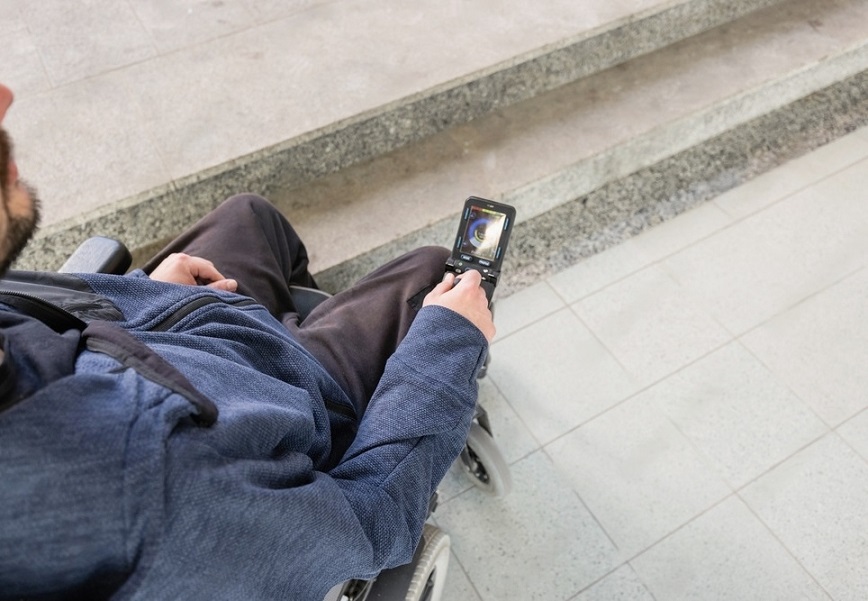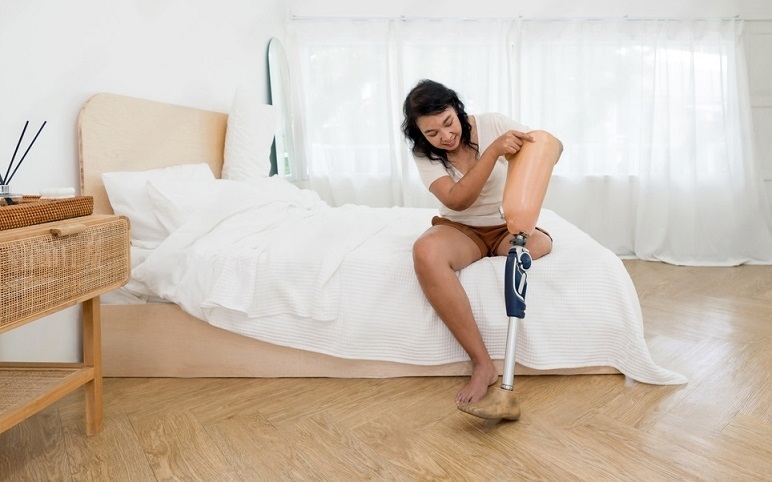Table of Contents
Introduction
In today’s world, where personal hygiene is of utmost importance, individuals with mobility issues often face unique challenges in maintaining cleanliness and independence. Fortunately, bidets offer a practical and efficient solution to address these concerns. In this article, we will explore the numerous benefits that bidets provide for people with mobility issues, focusing on improved hygiene, enhanced independence, accessibility features, comfort, cost-effectiveness, and social and environmental impact.

Improved Hygiene
Reducing Bacterial Contamination
One of the primary benefits of bidets for individuals with mobility issues is the significant reduction in bacterial contamination. Unlike traditional toilet paper, which may not effectively clean all areas, bidets use a stream of water to thoroughly cleanse after using the toilet. This helps eliminate harmful bacteria and reduces the risk of urinary tract infections and other hygiene-related illnesses.
Preventing Skin Irritation and Infections
Moreover, bidets can prevent skin irritation and infections, which are common concerns for individuals with mobility issues who may struggle with proper hygiene. The gentle yet effective cleansing action of bidets helps maintain skin integrity and reduces the likelihood of conditions such as dermatitis or pressure ulcers, thus promoting overall skin health.
Comparison of Bidet vs. Traditional Toilet Paper Hygiene Practices
It is essential to compare the hygiene practices associated with bidets and traditional toilet paper to understand the superiority of bidet usage, especially for individuals with mobility issues. While toilet paper may seem convenient, it often fails to provide thorough cleaning, leading to residual bacteria and potential hygiene-related issues. Bidets, on the other hand, offer a comprehensive and hygienic solution that ensures cleanliness and comfort after each use.

Enhanced Independence
Reduced Reliance on Caregivers
For individuals with mobility issues, maintaining independence in personal hygiene tasks can significantly impact their sense of dignity and self-esteem. Bidets empower these individuals by reducing their reliance on caregivers for assistance with toileting and hygiene routines. With a bidet, individuals can manage their hygiene independently, enhancing their autonomy and overall quality of life.
Increased Privacy and Dignity
Additionally, bidets promote privacy and dignity in personal care routines, which is crucial for individuals with mobility issues who may require assistance in the bathroom. By allowing individuals to clean themselves effectively without external help, bidets afford them a greater degree of privacy and autonomy, fostering a sense of dignity and self-respect.
Testimonials or Case Studies Illustrating Enhanced Independence with Bidet Usage
Numerous testimonials and case studies highlight the transformative impact of bidets on the lives of individuals with mobility issues. From regaining independence in personal hygiene tasks to experiencing newfound confidence and self-reliance, these accounts underscore the importance of bidets as a supportive and empowering solution for individuals with mobility challenges.

Accessibility Features
Overview of Bidet Models with Accessibility Features
Bidets have evolved significantly in recent years to include a wide range of accessibility features tailored to meet the needs of individuals with mobility issues. These features enhance usability, comfort, and convenience, ensuring that bidets are accessible to users of all abilities. Below is an overview of some common accessibility features found in modern bidet models:
Adjustable Height and Angle Settings:
Many bidet models come equipped with adjustable height and angle settings, allowing users to customize the position of the cleansing nozzle to suit their individual needs. This feature is particularly beneficial for individuals with mobility issues who may have difficulty reaching or bending.
Easy-to-Reach Controls
Accessibility-friendly bidets are designed with easy-to-reach controls that are intuitive to use. Large buttons or knobs located within arm’s reach make it simple for individuals with limited dexterity or mobility to adjust water temperature, pressure, and other settings.
Ergonomic Design
Bidets feature ergonomic designs that prioritize user comfort and ease of use. The seating position is carefully designed to promote proper posture and support, reducing strain on the body during use. Additionally, smooth contours and rounded edges minimize the risk of discomfort or pressure points.
Wide Seating Area
Some bidet models offer a wide seating area to accommodate users of all sizes comfortably. This spacious design provides ample room for individuals with mobility issues to position themselves securely on the bidet seat, ensuring stability and safety during use.
Remote Control Options
Certain bidet models come with remote control options, allowing users to adjust settings and activate cleansing functions with ease. Wireless remotes or wall-mounted control panels eliminate the need to reach awkwardly behind or beside the toilet, enhancing accessibility for individuals with mobility challenges.
Nightlight Feature
For added convenience and safety, some bidet models are equipped with a built-in nightlight feature. This soft illumination makes it easier for individuals with mobility issues to navigate the bathroom at night, reducing the risk of accidents or falls.
Quick Release Mechanism
Accessibility-friendly bidets often feature a quick release mechanism that allows for easy removal of the bidet seat for cleaning and maintenance. This feature eliminates the need for strenuous bending or reaching, making it simpler for individuals with mobility issues to maintain their bidet unit.
Anti-Slip Surface
To enhance user safety, many bidet seats are equipped with an anti-slip surface that provides additional traction and stability during use. This helps prevent slips and falls, particularly for individuals with mobility issues who may require extra support when sitting or standing.
Customization Options for Specific Mobility Needs
Furthermore, bidets offer customization options that cater to specific mobility needs, ensuring optimal comfort and functionality for users. Whether adjusting water temperature, pressure, or nozzle position, individuals can personalize their bidet experience to suit their unique requirements, enhancing usability and accessibility in the bathroom.
Compatibility with Existing Bathroom Setups and Assistive Devices
Bidets are designed to be versatile and compatible with a wide range of existing bathroom setups and assistive devices commonly used by individuals with mobility issues. Whether installing a standalone bidet unit or incorporating a bidet attachment onto an existing toilet, bidets offer flexibility and accessibility to accommodate various needs. Below are key considerations regarding the compatibility of bidets with existing bathroom setups and assistive devices:
Standalone Bidet Units
Standalone bidet units are freestanding fixtures that are separate from the toilet. These bidets typically require additional space in the bathroom for installation and may involve plumbing modifications to connect to the water supply. While standalone bidets offer a dedicated cleansing solution, they may not be suitable for all bathroom layouts due to space constraints.
Bidet Attachments
Bidet attachments are devices that can be installed directly onto existing toilets, transforming them into bidet-equipped fixtures. These attachments come in various designs, such as mechanical or electronic, and can be easily installed without the need for extensive plumbing work. Bidet attachments are a cost-effective and space-saving option for individuals looking to add bidet functionality to their existing bathroom setups.
Compatibility with Toilet Types
Bidets are compatible with most standard toilet types, including elongated and round bowls. Before purchasing a bidet attachment, it is essential to ensure compatibility with the specific dimensions and shape of the toilet bowl. Many bidet manufacturers provide compatibility guides or measurement templates to help users determine the right fit for their toilet.
Accessibility Considerations
When selecting a bidet for individuals with mobility issues, it is crucial to consider accessibility features that enhance usability and comfort. Look for bidet models with adjustable height and angle settings, easy-to-reach controls, and ergonomic design elements that cater to users with varying mobility needs. Additionally, ensure that the bidet attachment or unit is compatible with any assistive devices, such as grab bars or raised toilet seats, that may be present in the bathroom.
Installation Requirements
The installation process for bidets varies depending on the type of unit or attachment chosen. Standalone bidet units typically require professional installation due to plumbing considerations, while bidet attachments can often be installed by the user using basic tools and instructions provided by the manufacturer. Before purchasing a bidet, consider the installation requirements and whether professional assistance may be needed.
- Water Supply Compatibility
Bidets require access to a water supply for cleansing functions. Most bidet attachments connect to the existing toilet’s water supply line, while standalone bidet units may require separate plumbing connections. Ensure that the bidet is compatible with your bathroom’s water supply system and that adequate water pressure is available for optimal performance.

Comfort and Convenience
Adjustable Water Temperature and Pressure
Bidets equipped with adjustable water temperature and pressure settings offer users the flexibility to customize their cleansing experience according to their preferences and comfort levels. These features are particularly beneficial for individuals with mobility issues who may have specific sensitivities or requirements. Below, we delve into the significance of adjustable water temperature and pressure in bidets:
Enhanced Comfort and Sensitivity
- Water Temperature: Adjustable water temperature allows users to choose between warm or cold water based on their preference and sensitivity. For individuals with mobility issues who may experience discomfort with cold water, the option to adjust the temperature ensures a more pleasant and soothing cleansing experience.
- Water Pressure: Similarly, adjustable water pressure enables users to control the intensity of the water stream. Gentle pressure settings are suitable for individuals with sensitive skin or conditions such as hemorrhoids, while higher pressure settings offer a more thorough cleanse for those who prefer it.
Personalized Hygiene Experience
- Customization: The ability to customize water temperature and pressure enables users to tailor their hygiene routine to suit their individual needs and preferences. Whether seeking gentle cleansing for sensitive areas or a more invigorating cleanse for thorough hygiene, adjustable settings ensure a personalized and comfortable experience.
- User Preferences: Users with mobility issues may have specific preferences regarding water temperature and pressure based on their comfort levels and sensitivities. Adjustable settings empower individuals to create a hygiene routine that aligns with their preferences, promoting a sense of control and independence in personal care.
Improved Circulation and Relaxation:
- Warm Water Benefits: Warm water can promote improved circulation and relaxation, particularly beneficial for individuals with mobility issues who may experience muscle tension or stiffness. Adjustable water temperature allows users to enjoy the therapeutic benefits of warm water cleansing, helping to alleviate discomfort and promote relaxation.
- Gentle Cleansing: Lower pressure settings coupled with warm water can provide a gentle and soothing cleanse that enhances comfort and relaxation. This is especially beneficial for individuals with mobility issues who may experience sensitivity or discomfort during personal hygiene tasks.
Accessibility and Inclusivity
- Universal Design: Bidets with adjustable water temperature and pressure settings embody principles of universal design by catering to a diverse range of users, including those with mobility issues. These features ensure that bidets are accessible and inclusive, accommodating varying comfort levels and preferences without compromising effectiveness.
- Promoting Independence: Adjustable settings empower individuals with mobility issues to take control of their hygiene routine and maintain independence in personal care tasks. By providing options for customization, bidets enhance accessibility and promote dignity, allowing users to manage their hygiene needs with confidence and comfort.
Ergonomic Design for Ease of Use
Moreover, bidets feature ergonomic designs that prioritize ease of use, particularly for individuals with mobility issues. From intuitive controls to accessible seating positions, bidets are engineered with user comfort and convenience in mind, making them suitable for individuals of all abilities.
Additional Features such as Air Drying and Heated Seats
Many bidet models also boast additional features such as air drying functions and heated seats, further enhancing user comfort and convenience. The built-in air dryer eliminates the need for toilet paper, promoting sustainability and reducing environmental waste, while heated seats provide added warmth and comfort during use.

Cost-Effectiveness
Comparison of Long-Term Costs
When considering the long-term costs associated with personal hygiene, bidets offer a compelling alternative to traditional methods such as toilet paper. While bidets require an initial investment, they can result in significant cost savings over time. Below, we compare the long-term costs of bidets versus traditional hygiene methods:
Initial Investment
- Bidets: The initial cost of purchasing and installing a bidet varies depending on the type and model chosen. Standalone bidet units typically have higher upfront costs due to plumbing and installation expenses, ranging from a few hundred to several thousand dollars. Bidet attachments, on the other hand, are more affordable, with prices typically ranging from $30 to $300, depending on features and brand.
- Traditional Methods: Traditional hygiene methods, such as toilet paper, wipes, and feminine hygiene products, involve ongoing expenses for purchasing disposable items. While the initial cost may be lower compared to bidets, these expenses can add up significantly over time, particularly for individuals with mobility issues who may require larger quantities of hygiene products.
Consumable Costs
- Bidets: Once installed, bidets have minimal ongoing consumable costs. The primary recurring expense is for water usage, which is relatively low compared to the continuous purchase of toilet paper and wipes. Additionally, some bidet models feature air drying functions, reducing or eliminating the need for toilet paper altogether.
- Traditional Methods: Traditional hygiene methods entail regular purchases of toilet paper, wipes, and other disposable products. The cost of these consumables can vary depending on brand, quantity, and frequency of use. Over time, the cumulative expense of purchasing these items can be significant, particularly for individuals with mobility issues who may require larger quantities for daily hygiene routines.
Environmental Impact
- Bidets: In addition to cost savings, bidets offer environmental benefits by reducing reliance on disposable paper products. By minimizing toilet paper usage, bidets help conserve natural resources, reduce waste, and lower carbon emissions associated with production and disposal. This aligns with sustainability goals and promotes eco-friendly hygiene practices.
- Traditional Methods: Traditional hygiene methods contribute to environmental pollution and deforestation through the continuous consumption and disposal of toilet paper and wipes. The production and transportation of these disposable products have significant environmental impacts, including habitat destruction, water pollution, and greenhouse gas emissions.
Long-Term Savings
- Bidets: While bidets require an initial investment, their long-term cost-effectiveness is evident in the savings realized over time. By reducing or eliminating the need for toilet paper and wipes, bidets help offset their initial cost and can result in substantial savings over months and years. This makes bidets a cost-effective and sustainable hygiene solution in the long run.
- Traditional Methods: In contrast, the ongoing expenses associated with traditional hygiene methods can accumulate over time, resulting in higher overall costs. The continuous purchase of disposable products represents a recurring financial burden, particularly for individuals with mobility issues who may have higher usage requirements. Additionally, the environmental costs of disposable products further contribute to the overall expense of traditional methods.
Accessibility to Bidet Options Across Different Price Ranges
It is worth noting that bidet options are available across different price ranges, making them accessible to individuals with varying budgets. Whether opting for a basic bidet attachment or a more advanced standalone unit, there are options available to suit every budget and preference, ensuring affordability and accessibility for all.

Social and Environmental Impact
Reduction of Toilet Paper Waste and Environmental Footprint
One of the most significant benefits of bidets is their contribution to reducing toilet paper waste and environmental footprint. By minimizing reliance on disposable paper products, bidets help conserve natural resources, reduce deforestation, and mitigate the environmental impact of traditional hygiene practices.
Promotion of Sustainable and Eco-Friendly Hygiene Practices
Moreover, bidets promote sustainable and eco-friendly hygiene practices that align with global efforts to reduce waste and conserve the environment. By encouraging water conservation and minimizing reliance on disposable products, bidets offer a more environmentally friendly alternative to traditional toilet paper usage, promoting responsible consumption and environmental stewardship.
Social Stigma Surrounding Bidet Usage and Its Impact on Acceptance
Despite their numerous benefits, bidets continue to face social stigma and misconceptions surrounding their usage, particularly in certain cultural contexts. However, as awareness grows and people become more informed about the advantages of bidets, societal attitudes are gradually shifting towards greater acceptance and adoption of bidet technology as a viable hygiene solution for individuals with mobility issues and beyond.
Conclusion
In conclusion, bidets offer a myriad of benefits for individuals with mobility issues, ranging from improved hygiene and enhanced independence to accessibility, comfort, cost-effectiveness, and positive social and environmental impact. By providing a practical and efficient solution to address the unique hygiene needs of individuals with mobility challenges, bidets empower users to maintain cleanliness, dignity, and autonomy in their daily lives. As awareness continues to grow and bidet technology evolves, it is essential to promote inclusivity and accessibility in personal hygiene solutions, ensuring that everyone has the opportunity to enjoy the benefits of a clean and hygienic lifestyle.
